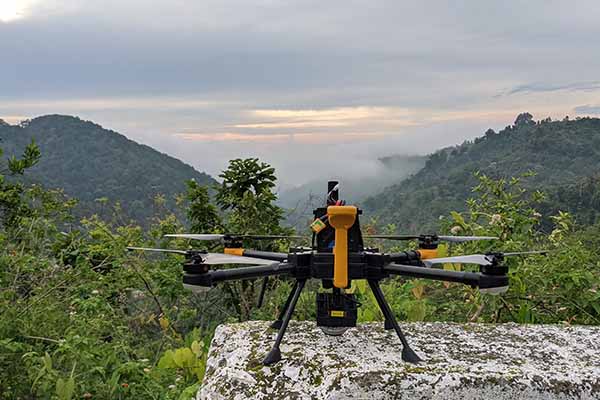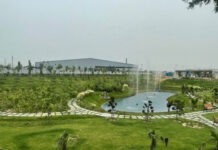With the evolving technology and reduced cost, the drones have expanded to non-military use. Now they are being used for aerial photography, medicines, food and e-commerce delivery, inspection, surveillance and imagining, etc.
In FY2020, India’s UAV market was valued at $830 million. It is projected to grow at a compound annual growth rate (CAGR) of 14.5 percent during the 2021–2026 period. Despite the effects of the global pandemic on many sectors of the economy.
Policy:
Further, many policy initiatives have been taken by the government for the promotion of Drones in India. The Ministry of Civil Aviation (MoCA) of India issued a new set of drone laws and regulations, in June 2021. These rules are for anyone operating an Unmanned Aerial Vehicle in India. Unless an exemption is granted, operating a UAV will require applying for and acquiring a unique identification number. UAV operators will be needed to submit details on the Digital Sky platform. This is a MoCA-led initiative to control UAV operation and traffic in India, in order to get this identification number. Some Indian state governments have also developed innovative UAV policies to attract investment in this area.
Consider the expansion of the sector and expanding use cases, the government has further liberalised policy of drone use in India. Under the Drone rules 2021, an interactive drone airspace map with green, yellow and red zones is being displayed. No permission is required for operating drones in green zones. Further, the yellow zone, where ATC permission is required, has been reduced from 45 km to 12 km from the airport perimeter. Further, no remote pilot license is required for micro drones (for non-commercial use) and all nano drones.
Production Linked Incentive:

Further, the government has started a Production Linked Incentive scheme for drones and drone components for implementation during 2022-23 to 2024-25 with an outlay of 120 crore rupees. The objective of this scheme is to incentivize the manufacturing of drones and drone components in the country. This is with a focus to make the indigenous industries globally competitive. Vipul Singh, co-founder and CEO, Aereo says, “you have to do a lot of hard work to be able to establish a supply chain design and find out your suppliers and vendors to get into the pure manufacturing of drones in India. So, the incentives help in that encouragement. Whatever cost inefficiencies exist in the sector right now, those inefficiencies are covered by the incentives of the PLI scheme.”
Challenges:

India is a densely populated country with haphazard construction. It is common to find towers at random places with wires hanging from them. This can pose an obstruction to drones and even cause an accident. Drone regulation 2021 imposes a penalty of INR 1 lakh for violations of regulations. Further, the government has proposed to develop Drone corridors for cargo deliveries.
In an unfortunate incident, metro operations on the magenta line of Delhi Metro between Jasola Vihar and Botanical Garden stations were shut for nearly two hours on 26 December 2022 after a drone fell on the Metro rail tracks.
Vipul says, “Under the current state, they should not use it over critical infrastructure and populated areas to avoid such catastrophic outcomes.” “Delivery of medicines, I would say, would happen or is already happening with the drones. I do not see or foresee the delivery of e-commerce goods happening from a door-to-door level in the urban populated areas yet because that would require drone technology to become very mature and a lot of supporting infrastructure, which is around traffic management, defining specific corridors for drones and times of operation, standards of operation, certification, and criteria- all these must be sorted out,” he added.
Importance:
The hilly region of Northeast India, the Western Ghats, and the Himalayas offer difficult terrain. Essential supply like medicine or blood takes a lot of time to reach their destination through curvy hill roads. The destination can be reached vertically in a very less amount of time through drones. Vipul says, “there are companies that are doing these experiments in these areas which make more sense than trying to do it in Delhi which is already having a good network of hospitals and density of pharmacies mostly having stock of all kinds of medicines you need.”
In terms of policy framework, India is still ahead of the curve concerning other developed countries. Drone rules 2021, unique identification number, and PIL scheme are the steps in the right direction. The industry expects a proactive policy framework from the government. Vipul says, “a clear road map should be defined that in next three years or five years or 10 years, what all possibilities government is looking at and what will be the various phases of standards and policy development so that the industry and government both can create a long-term roadmap in synchronization with each other, which is what generally does not happen. The industry realizes first and then goes to the government, tries to convince them to change any regulatory ecosystem and it takes few couples of years to go there.”
Future:
Uses cases and technology are evolving. We are currently in level 3 of autonomy. Drones still require a good set of inputs from the pilot to operate, if not from the joystick, at least from the tablet. Further, drones cannot operate and sense the environment around them on their own.
On the future of the drone in the next 5 to 10 years, Vipul says, “the day is not far when every village will have one drone and local entrepreneur or hyperlocal entrepreneur would be serving local demand within that village, whether it is surveying the Panchayati Raj infrastructure or let’s say spraying pesticides and fertilizers over the crop being grown in that particular area, just like every village has one or two tractors. Similarly, every mine and road construction agency will have a drone to monitor the progress of the road construction.”
“As the data security becomes essential, a lot of data security standards will come into play,” he further added.















